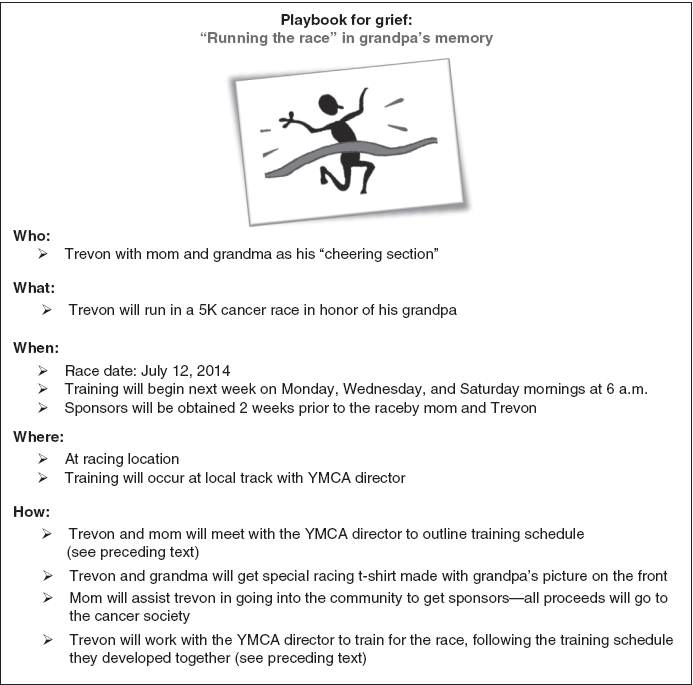When starting treatment, the focus typically starts by treating the traumatized child through individual therapy. But this approach does not include the entire traumatized family and can lead to relapse. And if the trauma story is told over and over again, inevitably we, as clinicians, get this response…
“Now what? After talking about our trauma, we want tools to heal our pain so that we can move past it.”
The question underscores what stuck clients and families want… Concrete tools to heal their child’s problem and answer the “Now what?” question.
The FST| Family Systems Trauma Model uses what are called the FST Trauma Playbooks. These playbooks are concrete written plan to answer the “Now What?” question.
The key to their success is that they are pre-written, clarify everyone’s roles, and contain a concrete intervention to heal the primary unhealthy undercurrents in that family that is causing the child’s trauma to not heal.
In the case example, 16-year-old Trevon’s unhealthy undercurrent was unresolved grief with the death of his grandfather. Years had gone by without any “now what?” interventions to heal this grief. As a result, the child remain d symptomatic and the family hopelessly stuck.
When you address the root cause of the child problem or the undercurrents through the FST Trauma Playbook, suddenly the family has hope and a clear pathway to get unstuck in the here and now.
Let’s look at how this is accomplished…
Case Example
Sixteen-year-old Trevon was returning to the community after finishing residential treatment for the second time. In all the years of treatment, no one had spent much time including the family or inquiring about the events surrounding his first outbreak of aggression and running away at an early age.
After careful questioning, it was revealed that Trevon’s grandfather had died 2 years ago from cancer. Trevon’s dad had abandoned the family when he was a child, so his grandfather was the only dad he ever knew. During the family session, it became clear that that family had not grieved the loss.
In addition, there was underlying conflict between the grandmother and mother who were now raising Trevon in the same house together. They appeared to blame one another for the grandfather’s death with finger-pointing whenever the grandfather was discussed.
The major lies the grandmother believed was that the mom going to prison for a short time broke the grandfather’s heart and caused the cancer. Trevon felt caught in the middle of this conflict and felt like he had to choose sides.
As a result, the home became toxic, and Trevon ran away from home constantly.
To address these issues, the FST (Family Systems Trauma) therapist came up with a creative Trauma Playbook that contained the intervention of a 5K cancer run in his grandfather’s memory.
This intervention was designed to directly heal the root cause of Trevon’s trauma or unhealthy undercurrent of “unresolved grief”.
The family was chronically stuck here. They were not going to wake up one day and suddenly by osmosis know how to resolve this grief on their own. If Trevon’s family could do that they would have done it already. This is what they need a clear step-by-step Trauma Playbook to give them the tools to get unstuck.
This image here shows what the FST Trauma Playbook looked like.

Here are the highlights to look for:
- If Trevon could not talk out his grief, he could sweat it out through the run,
- Instead of running away, he could run for his grandfather.
- Everyone in the family was energized and had a clear role to play to help Trevon heal.
- The local YMCA director was invited to the session and he left so inspired that he agreed to come over three mornings a week to train Trevon for the race at no cost.
After the wound playbook, the grandmother’s mood immediately went from depressed to energized and joyful when she printed t-shirts with the grandfather’s picture on it.
And from this place of joy, grandmother was open to forgiving her daughter (Trevon’s mom).
And from this healed relationship, Trevon was no longer caught in the middle and the home was no longer toxic. Mother and son also started to become close again through the common goal of the race.
Trevon reported that the “Now what?” was answered. The playbook jump-started the process and was the catalyst to restructure the family.

